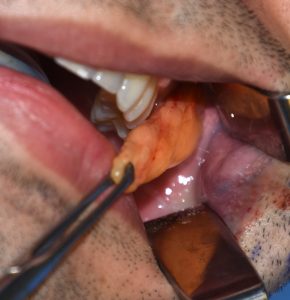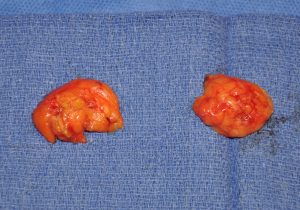

In the November 20223 Global Open section of the journal Plastic and Reconstructive Surgery an article appeared on this topic entitled ‘Success Rate of Buccal Fat Pad Removal in Cases of Previous Injection Lipolysis of the Cheeks: A Comparative Analysis’. In this paper the authors compared buccal lipectomy surgery between two groups of 100 patients, one that had prior fat dissolving injections into the buccal fat pad and those that never had such injections. (61patients in the injection group and 39 patients in the ‘control’ group) Success of the surgery was defined as the ability to find and remove the buccal fat pad.
Their results demonstrated that the success rate of buccal lipectomies was 100% in the control group and 91% in the injection group. In five of the injection group the buccal fat pad could not be found unilaterally in 2 patients and in 3 patients the buccal fat and was found to much smaller in weight (partially removed) than the other wide. While there were no complications in the control group, the injection had several ones including hematoma and wound dehiscence. Although not a specific complications they describe more difficulty in locating and dissecting out the buccal fat pads in the injection group.
The buccal lipectomy procedure can be done from two different approaches, a superior maxillary incision and a lower mid-cheek incision. Both are successful and are just two different incisional accesses to locate and remove portions of the buccal fat pad. They also share the similarity of the sometimes challenging location of the buccal fat pad which can be seen in patients who have had prior surgeries in the area. Thus it is no surprise that fat dissolving agents induce some potential shrinkage and fibrosis of the fat pad which can make surgery more difficult as well as affect the outcome.
Dr. Barry Eppley
World-Renowned Plastic Surgeon


